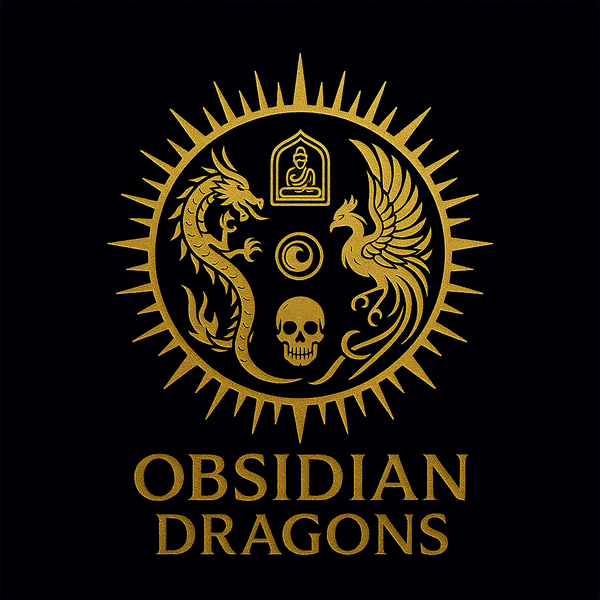obsidian dragons
Buddhist Votive Stone - Mahakala - Smoky Quartz - Rare
Buddhist Votive Stone - Mahakala - Smoky Quartz - Rare
Couldn't load pickup availability
Buddhist Votive Stone - Mahakala - Smoky Quartz - Rare
This votive stone, representing the Dharmapala Mahakala in his 6-armed form, hand-carved by a master specialized in Buddhist arts, is a rarity, worthy of being included in a large collection of Buddhist artifacts.
This exceptional and unique work of art is made from Himalayan smoky quartz.
Typical quartz inclusions, visible from the back at the top left of this Buddhist votive stone, help certify the authenticity of this natural mineral.
As a gemologist graduated from the National Institute of Gemmology in Paris, all our materials are appraised and certified.
Dimensions of this Buddhist votive stone: 84mm long by 45mm wide by 19.34mm thick
Weight of 450 carats (90 grams)
BUDDHIST VOTIVE STONE:
In the form of small sculptures or symbolic objects, these sacred objects play an important role in Buddhist practice.
A Buddhist votive stone can be used as an object of devotion, where practitioners offer it in prayer to express their respect for the Buddha's teachings and to solicit blessings.
They are also used as objects of meditation. The contemplation of a symbolic representation helps to focus the mind and deepen meditation.
A Buddhist votive stone is often used as part of offerings and rituals. It may be placed on altars with other sacred objects as a gesture of respect to Buddhist teachings.
Votive stones are said to have protective properties and can bring spiritual blessings. They can be placed in sacred spaces to create an atmosphere conducive to meditation and prayer.
By contemplating the votive stone carvings, Buddhist practitioners can aspire to develop qualities such as compassion, wisdom, and mental clarity, thereby contributing to their spiritual elevation.
DHARMAPALA MAHAKALA IN ITS 6-ARMED FORM: 
Mahakala, "the Great Black", is a deity venerated in Tantric Buddhism, particularly in Tibet. This dharmapala (understand, guardian of the Buddha's teachings) symbolizes the destruction of obstacles and the transformation of negative energies.
The worship of Mahakala is rooted in the search for protection, inner strength and spiritual transformation, invoked to overcome obstacles and achieve enlightenment.
Six-Armed Mahakala (Skr: Shad-bhuja Mahakala, Wylie: mGon po phyag drug pa) - Nyingshuk
Within the Gelugpa order of Tibetan Buddhism, a particular manifestation of Six-Armed Mahakala, called Nyingshuk, is venerated. Nyingshuk is considered a fierce and powerful emanation of the Bodhisattva of Compassion. This deity is adorned with the following symbolic attributes:
The six arms represent the accomplishment of the six perfections (shad-paramita) practiced and mastered by bodhisattvas during their training.
Each hand holds various instruments, each carrying its own symbolism.
Among these instruments one can find objects such as the skull cup (kapala), which symbolizes the transcendence of the ego and victory over ignorance.
This representation suggests the destruction of illusions and liberation from earthly attachments, thus facilitating the path to enlightenment.
Other instruments such as the damaru, a small hourglass-shaped drum, symbolizing the primordial and creative sound of the universe.
This evokes the power of Mahakala to influence the flow of time and transform energies in a benevolent way.
Also, in one of his hands is a Kartika,
Mahakala, as the guardian of the Buddha's teachings, embodies the strength needed to sever the attachments and bonds that keep individuals in the cycle of suffering. The kartika is the instrument par excellence for this symbolic task of separation.
In this representation on this exceptional votive stone, Mahakala holds a trident.
Associated with power and authority, the trident in Mahakala's hand symbolizes the strength needed to overcome negative forces and to exert control over disruptive energies.
Mahakala, trampling Ganesh, symbolizes triumph over material obstacles and energies hindering the spiritual path. Ganesh is often associated with obstacles in Hindu tradition, and Mahakala, by dominating him, represents victory over these hindrances.
The depiction of Mahakala trampling Ganesh can be interpreted as a statement of the superiority of Tantric Buddhism over other religious traditions, illustrating the strength of Buddhist dharma.
This form of Mahakala has been disseminated through various lineages, including the Sakyapa, Nyingmapa, Gelugpa, as well as the various Kagyüpa lineages.
Buddhist votive stone, Buddhist votive stone, Buddhist votive stone, Buddhist votive stone, Buddhist votive stone, Buddhist votive stone, Buddhist votive stone, Buddhist votive stone, Buddhist votive stone, Buddhist votive stone
Share
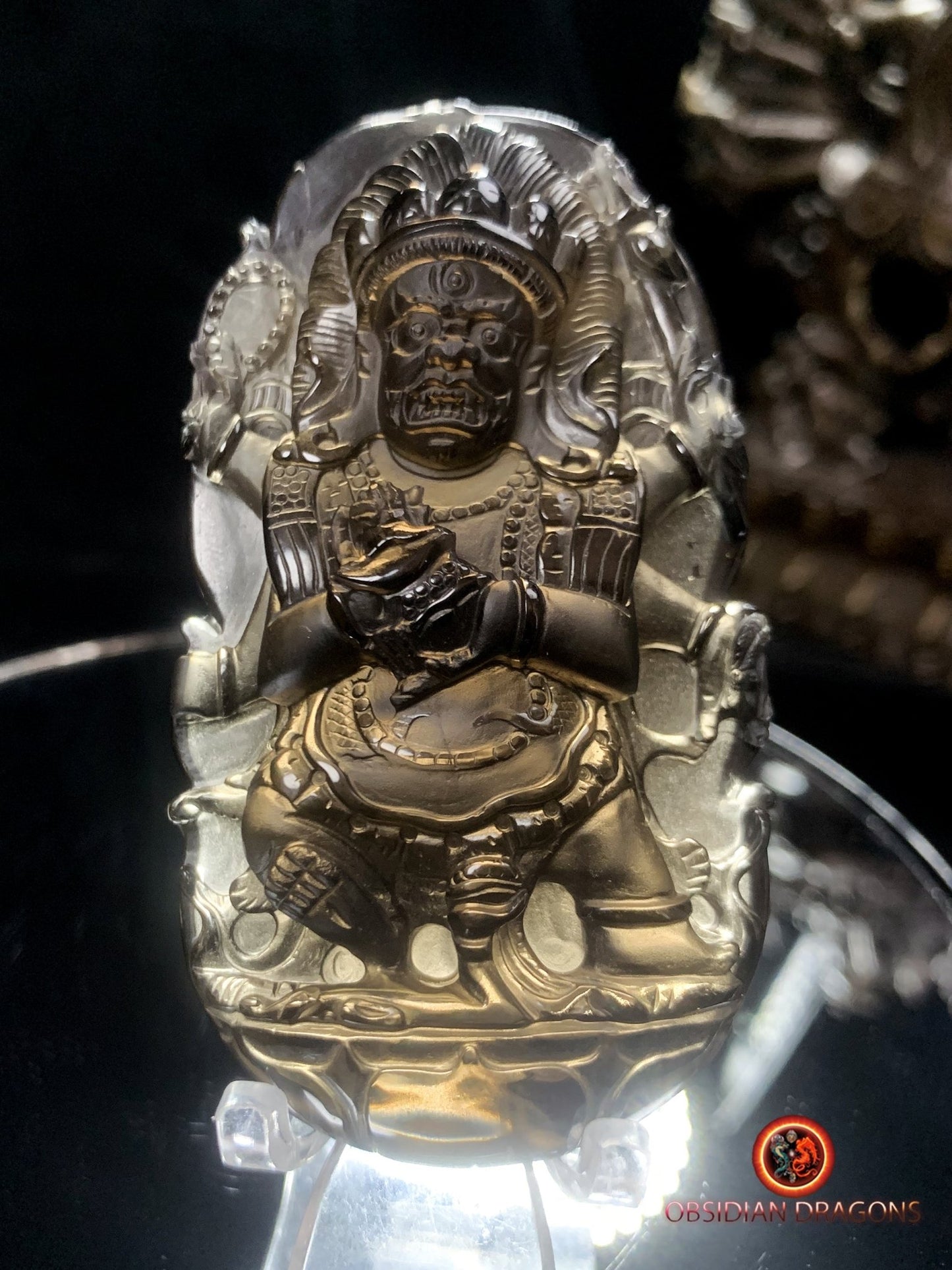


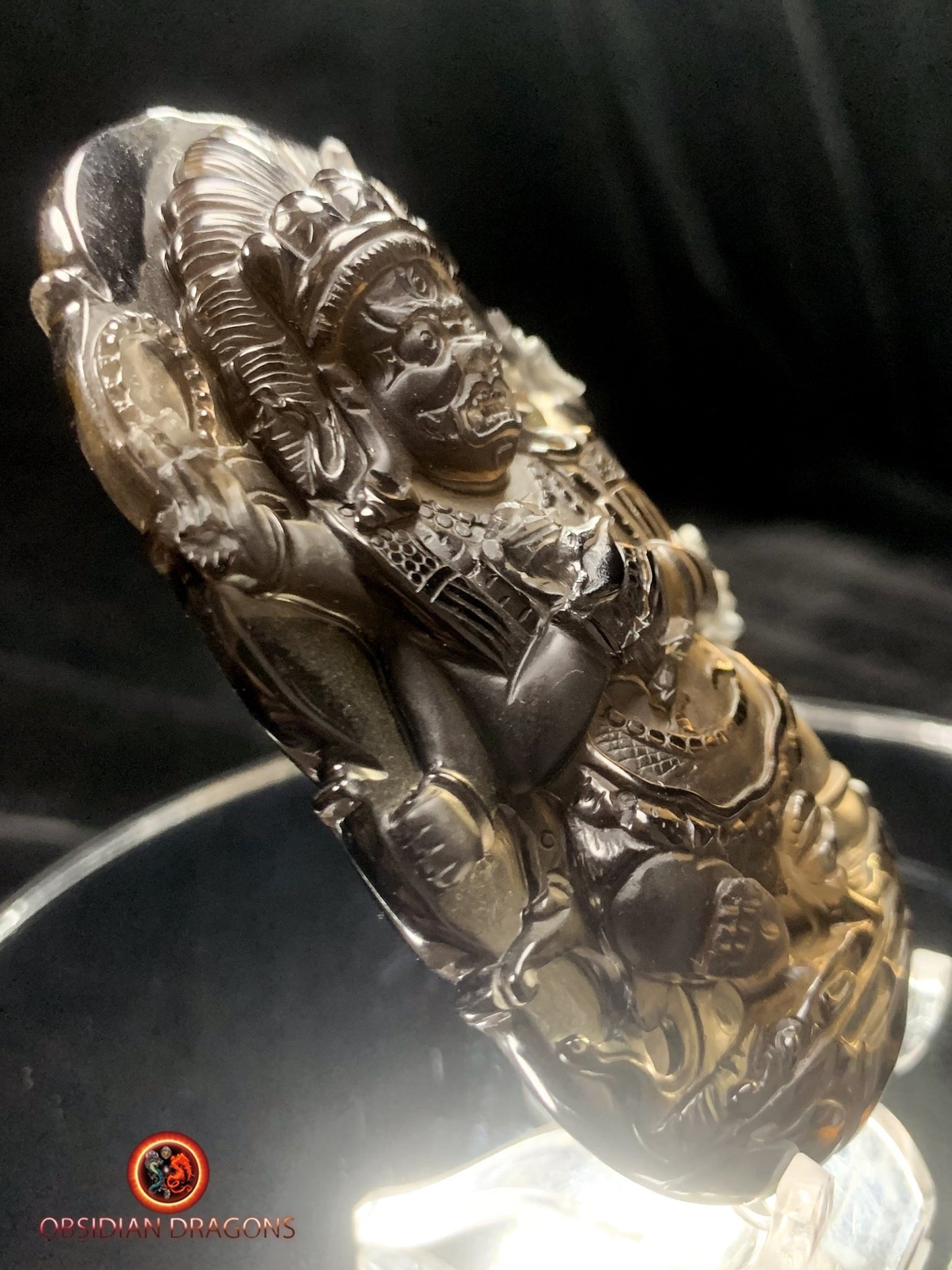
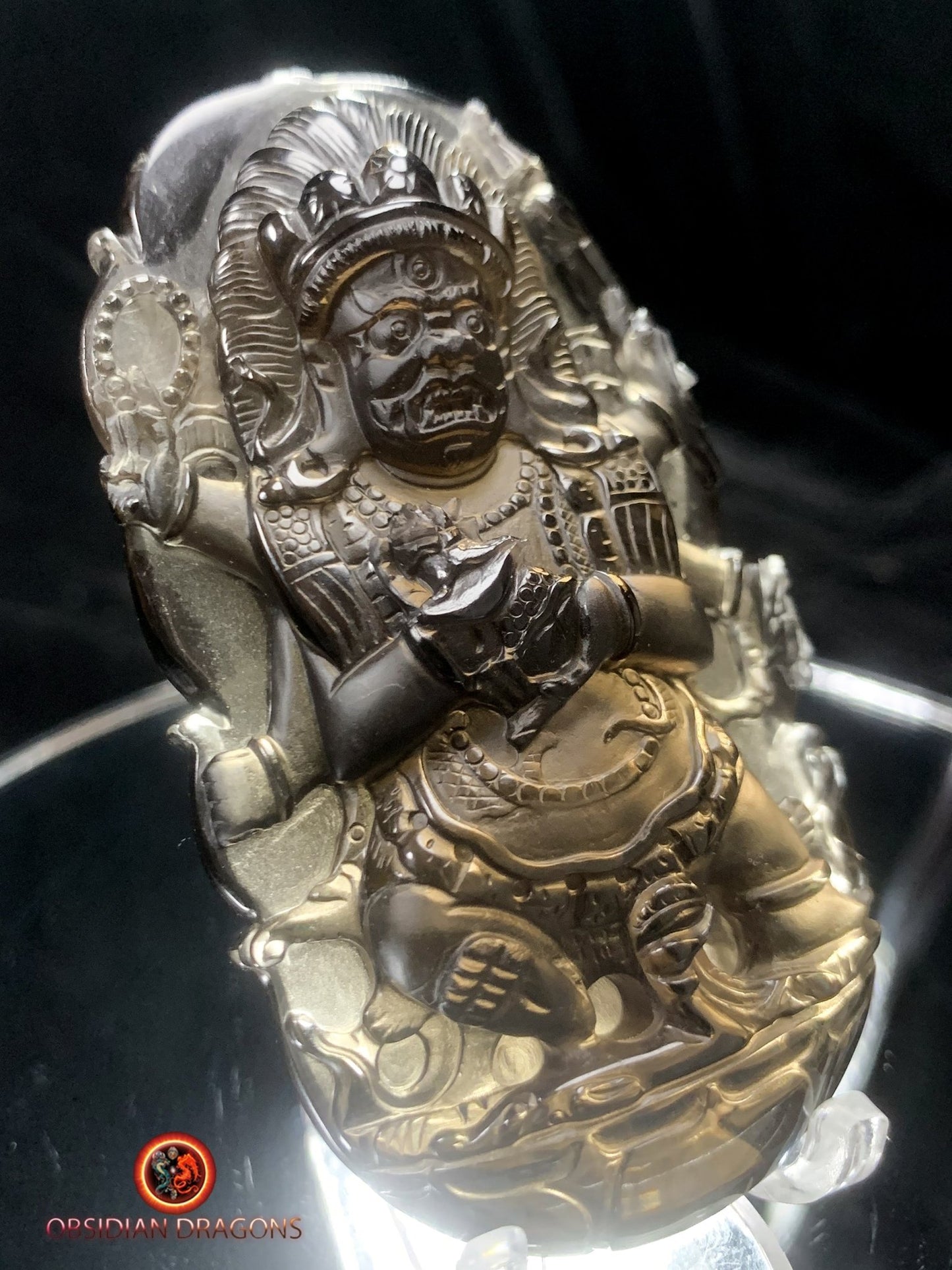
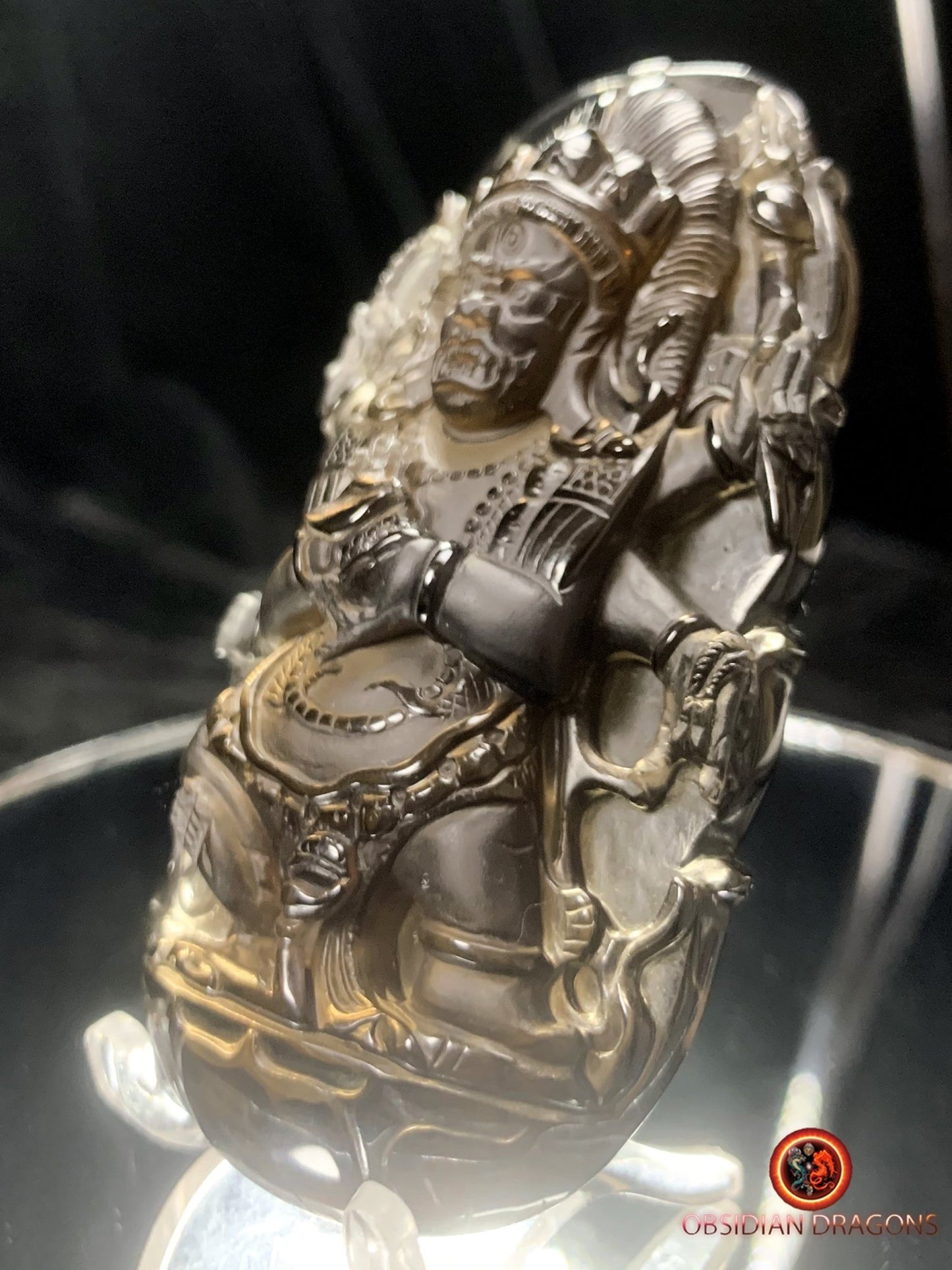
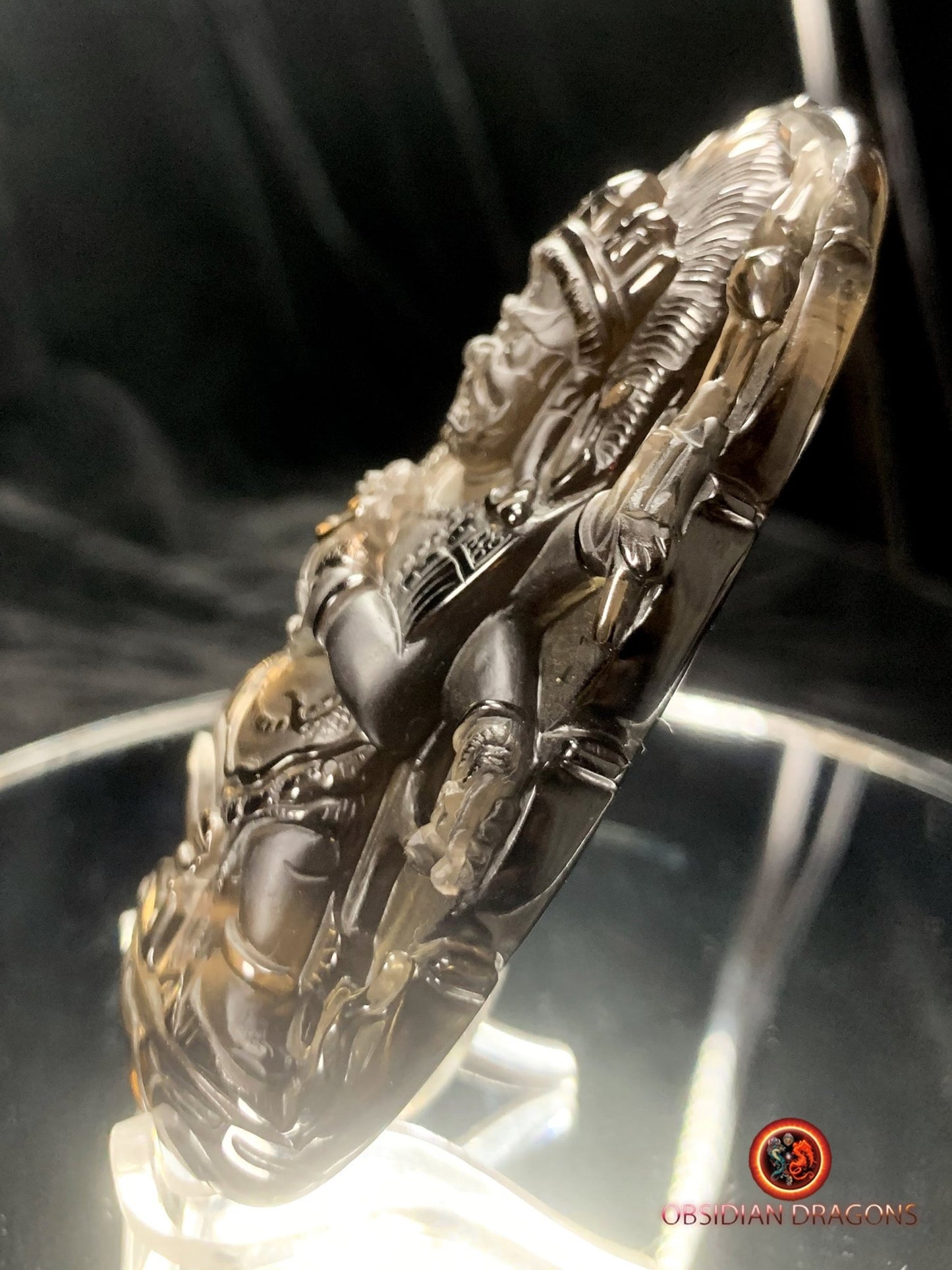
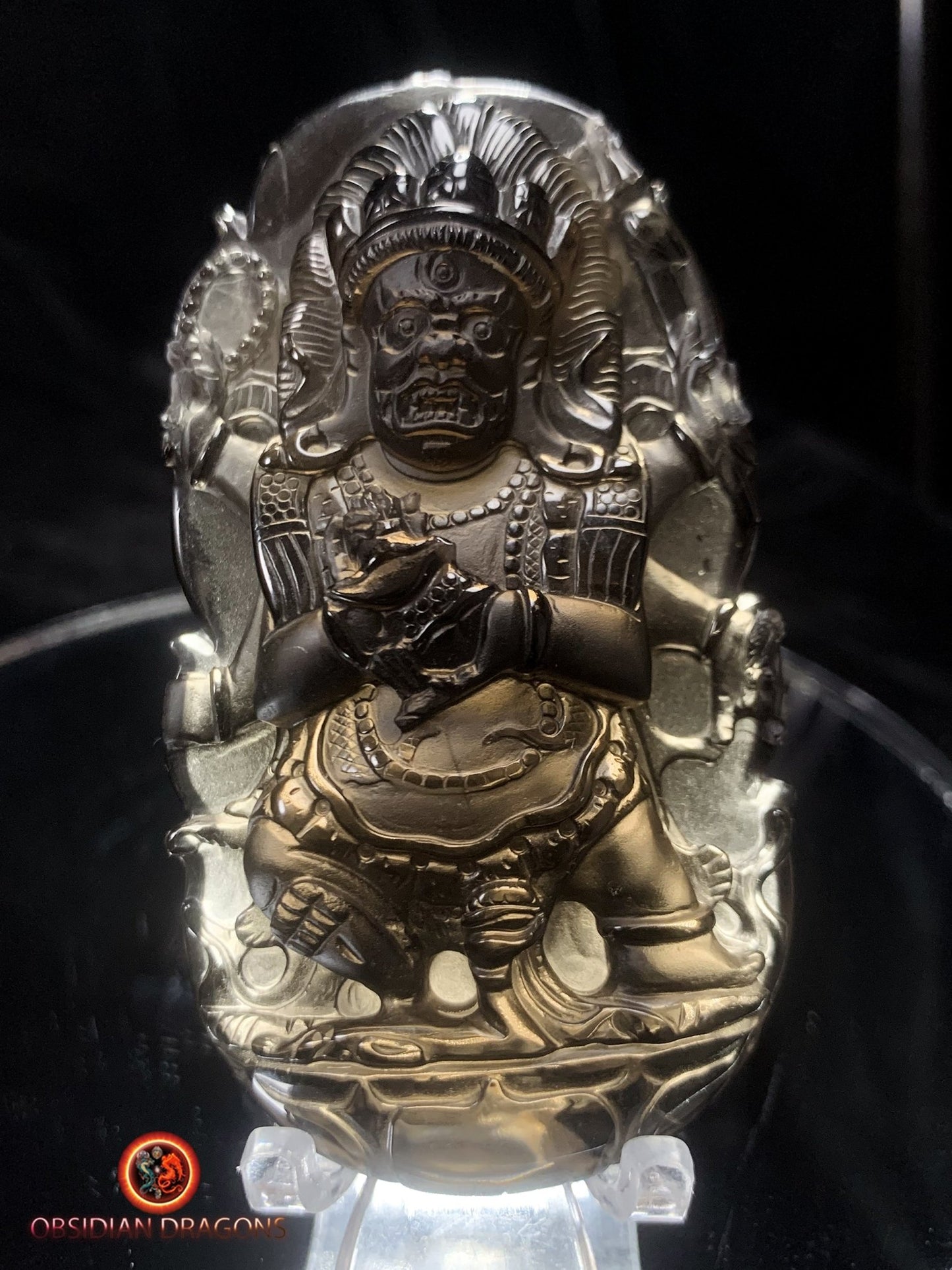


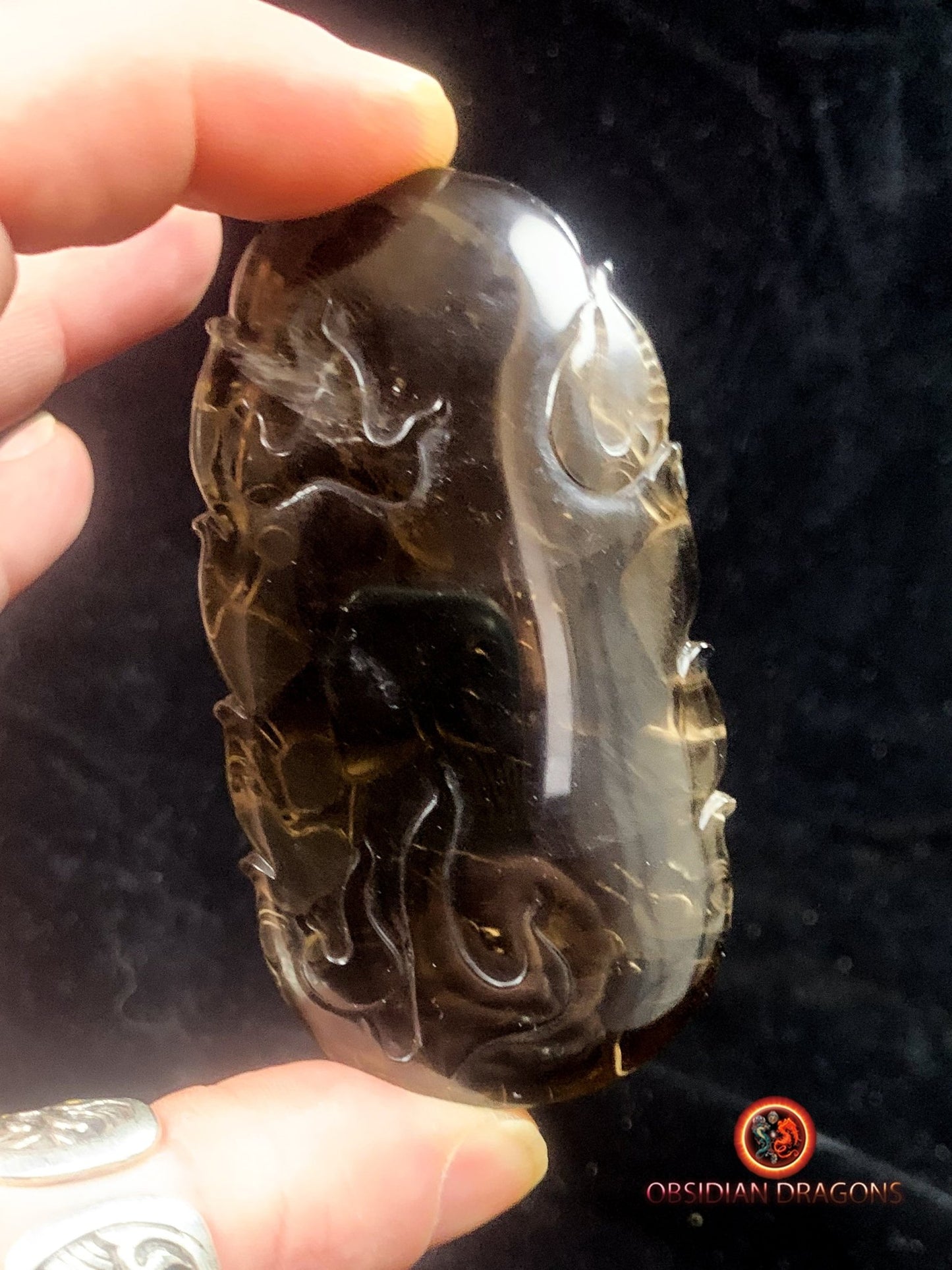


Return conditions for a Zen purchase
We offer you a money back guarantee within 14 days after delivery of your order.
If you are not completely satisfied with your purchase, please contact us to arrange a return of the product and a refund.
Except for returns, shipping is free on all orders.
Multi-column
Button text-

100% secure payment
3 times interest-free option with Scalapay
-

Free delivery in France and internationally
14 days money back guarantee after delivery (see our conditions of sale)
-

Column
Excellent customer service
Live chat
Whatsapp +33674049312
Let customers speak for us
from 917 reviews4eme pièce que j'achète et encore une fois, jamais déçue de l'unicité et de l'originalité. Coup de cœur pour ce bracelet en magnifiques molaires de mammouth, charge de vie et d'histoire. Attention pour un tout petit poignet de fille comme le mien cela peut être trop grand. N'hésitez pas à poser la question à Jeremy sur les tailles, il répond toujours et il est très réactif.

Déjà j’au été très impressionné par la qualité du site web pour tout chercheur de vérité mais également pour la disponibilité de Jérôme qui a su dépasser mes plus grandes attentes pour la commande sur mesure d’un mala en Obsidienne Œil Céleste – Dragon & Bagua Feng Shui. Gràce à ce puissant talisman je peux désormais continuer ma route sereinement. Un très grand merci sincèrement.

magnifique, puissant et apaisant, il m'aide à garder mon calme je le trouve absolument parfait!

J'ai eu l'occasion de rencontrer Jérémy sur Paris avant l'achat...très bon contact avec lui ..il sait de quoi il parle...je suis revenu vers lui pour l'achat de cette magnifique statue...elle a été emballee avec beaucoup de soin pour une expédition de chine... vraiment très satisfait de cet achat..merci

Pendentif dragon en obsidienne œil céleste - Symbole spirituel

Le collier est superbe, et ce pendentif magnifique, ses détails! et l'odeur du bois de santal que c'est agréable! Qualité extra! Contact excellent avec Jérémy, merci beaucoup pour votre gentillesse! Quelle qualité, vivement le mala !

L'objet est très joli et malgré que je ne sois pas un spécialiste, je trouve que le crystal est beau. Il n'est pas parfait et cela me rassure sur la qualité du produit qui est sensé être naturel donc imparfait.
Très bien emballé et en plus housse de rangement offerte.
MERCI

J’ai commandé un crâne de dragon, il est super beau et très puissant. Je l’adore 😍 Et l’envoi a été très rapide 🤗 merci 🙏🏻

bracelet puissant, je suis content de mon achat

Cet artisan est gémologue, il travaille avec des artisans qui sont des vrais artistes, je suis bluffé par la qualité des ouvrages sur l’argent et sa qualité. Quand à la qualité des pierres pas besoin d’être gémologue pour voir la qualité exceptionnelle des pierres, encore une fois le travail de sculpture est exceptionnel.
Mon mala traditionnel est une pure merveille dans la tradition originelle. Le ghau est une merveille qui me comble.
Bref que dire de plus :). Allez sur son site.
PS : vendeur qui connait son métier et les traditions bouddhistes ce qui est un plus en plus :)

Ce crâne est un Etre de Lumière. Attirant , inspirant , "parlant".
Il est un Ami qui tire mes pensées vers le Haut.
Ses énergies vibrent à des fréquences élevées. Il est puissant dans la douceur.
Un crâne de Dragon m'assite également. Merveilleux !

Très beaux bracelet et très puissants

Magnifique crâne givré de l'Himalaya.

cette chevalière est tres bien réalisé, avec beaucoup de détails, je suis heureux de l'avoir

